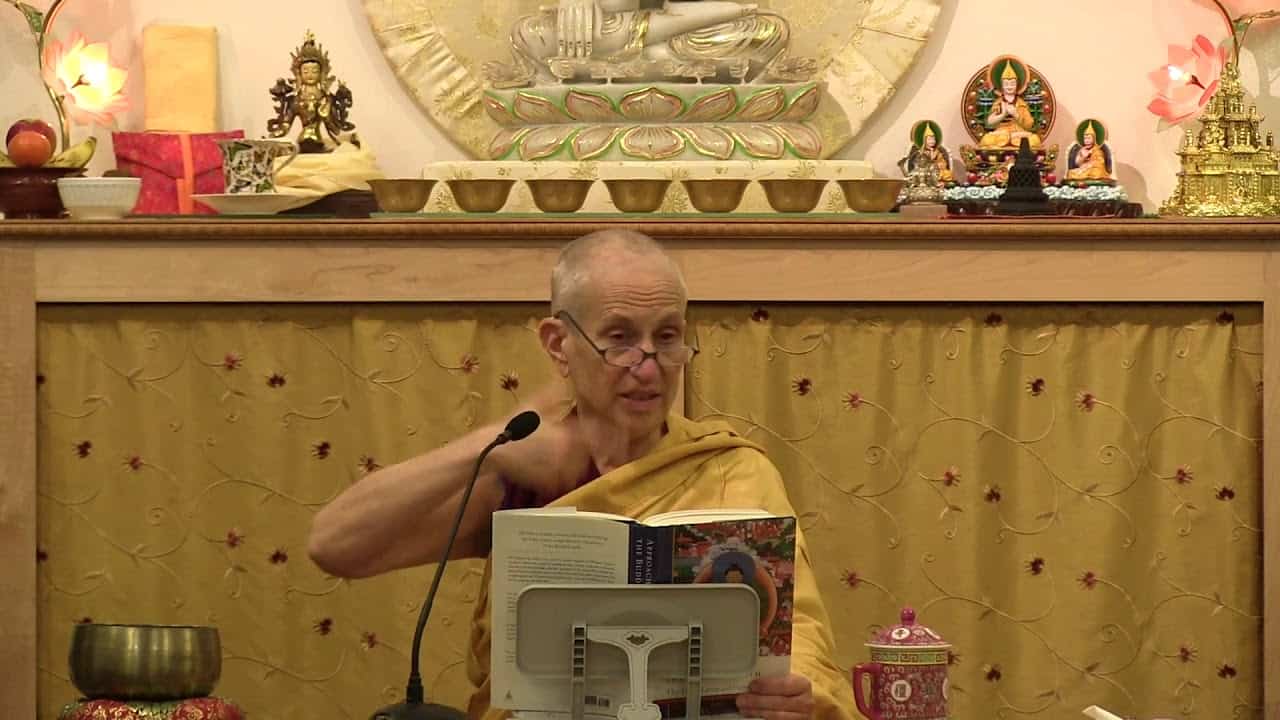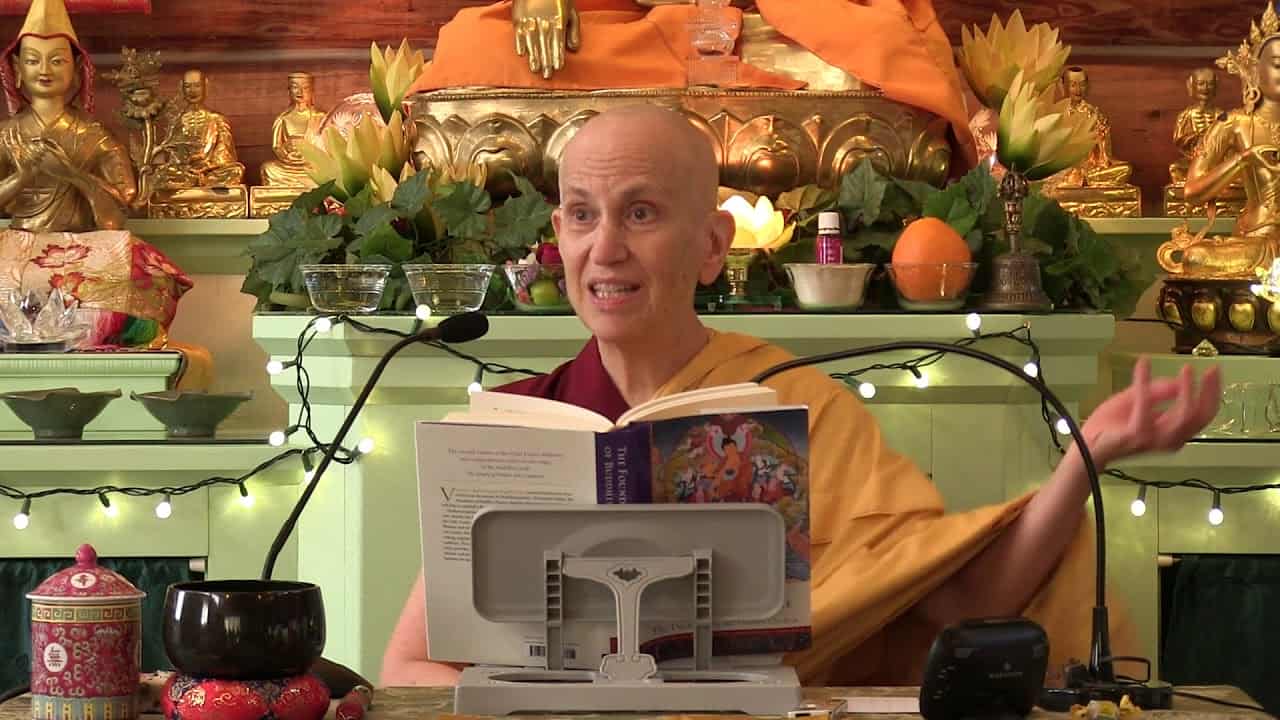Faulty conceptualization
16 The Foundation of Buddhist Practice
Part of a series of teachings given during a retreat based on the book The Foundation of Buddhist Practice given at Sravasti Abbey.
- Conceptual consciousness in Buddhist mindfulness practices
- Conceptuality and prejudice
- Mistaken and erroneous consciousnesses
- Conceptuality and identity
- Differentiating conceptual and nonconceptual consciousnesses
- Identifying and overcoming faulty conceptualization
- Questions and answers
The Foundation of Buddhist Practice 16: Faulty conceptualization (download)
Contemplation points
- To identify conceptual and non conceptual consciousness in your own experience, look at a color and listen to a sound. Minds that know these things are nonconceptual, sense direct perceivers. Close your eyes. Remember the color, then the sound. These remembering consciousnesses are conceptual mental consciousnesses to which a conceptual appearance appears. Which way of knowing the color and sound is more vivid and immediate, seeing or hearing it directly or remembering it?
- Which is more useful for understanding how a muscle works – a direct perceiver of the color of the muscle or a conceptual consciousness thinking about the way to strengthen the muscle through correct exercise?
- The next time you are experiencing pain, try to separate out the physical pain from the mental pain (the thoughts interpreting the physical sensation). Similarly, when you are really enjoying something (maybe a bowl of ice cream, a walk on the beach, praise, etc), try to separate out the physical experience from the mental one. Allow these exercises to help reinforce your understanding of conceptual and non conceptual consciousnesses.
- Do some people-watching. Note what is a direct perceiver and then the conceptual thoughts that follow. Or bring to mind a painful interaction with someone from the past. Note that even though it is not happening now, you can still feel angry or hurt. How does conceptualization in these examples influence the way you interact with others?
- What is the difference between erroneous and mistaken in the context of conceptual appearance? Why is a conceptual appearance always mistaken with regard to its appearing object? Give some examples of things that are both erroneous and mistaken, as well as things that are mistaken, but not erroneous (a reliable cognizer with respect to its apprehended object).
- Consider how much others suffer based on how your past experience colors the present. Think of examples of this from your own experience.
- In the morning when thinking about who you will meet that day, notice your expectation of how an interaction will go with a person with whom you have had difficulty in the past. Be aware that that person is not here now and today’s interaction has not yet occurred. To what extent will your expectation – which is just a conceptual appearance to your mind – become a self-fulfilling prophecy? Try to release that expectation and approach the person with a relaxed and open mind. How does the interaction differ from your expectation?
Venerable Thubten Chodron
Venerable Chodron emphasizes the practical application of Buddha’s teachings in our daily lives and is especially skilled at explaining them in ways easily understood and practiced by Westerners. She is well known for her warm, humorous, and lucid teachings. She was ordained as a Buddhist nun in 1977 by Kyabje Ling Rinpoche in Dharamsala, India, and in 1986 she received bhikshuni (full) ordination in Taiwan. Read her full bio.


